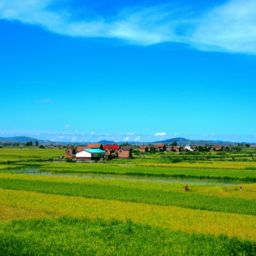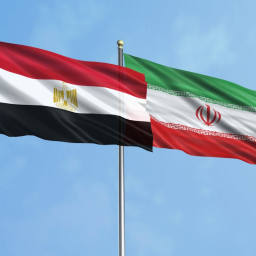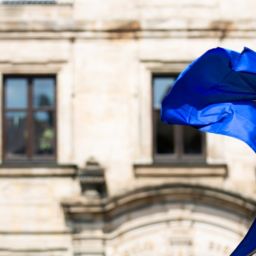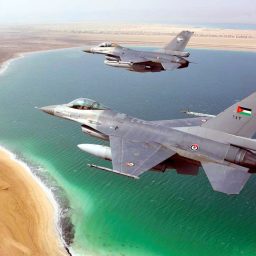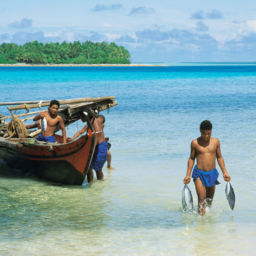Uzbekistan, the Pearl of Central Asia

Firstly, Uzbekistan is located in the heart of Central Asia and has a temperate continental climate for most of the country. Winters are not as cold and long as in Kazakhstan in the north, and summers are not as dry and hot as in Turkmenistan in the south. Warm springs start in February and cool autumns last until December, making it suitable for tourism for up to 10 months of the year. Secondly, the country is dotted with a beautiful and varied historical and cultural heritage, where visitors from all cultures can find a sense of historical identity. There are more than 7,000 monuments in the country, of which more than 200 are concentrated in four major historical cities, namely Samarkand, the “Crossroads of Civilisation”, Khiva, the “City of Epics and Fairy Tales”, Bukhara and the “Second City”. Bukhara” and the “Second Imperial Capital”, Shahrisabz. All four cities have been inscribed on the UNESCO World Heritage List. Finally, the warm and welcoming people of Uzbekistan offer a wide range of tourism options that take into account the country’s unique characteristics. From traditional ecotourism, historical tourism and healing tourism to unique gastronomic tourism, pilgrimage tourism, geological tourism, archaeological tourism and CIS tourism, visitors can experience the history and modernity of Uzbekistan in an immersive way.
The share of tourism services in Uzbekistan’s gross domestic product (GDP) has been increasing. In recent years, Uzbekistan has accelerated its transformation into an open market economy and has made tourism a strategic sector of the national economy. The current objectives of Uzbekistan’s tourism policy are mainly to ensure diversification of the tourism sector and accelerated regional development, create new jobs, increase people’s income and quality of life, and improve investment attractiveness.
In early January 2019, the Presidential Decree on Additional Measures to Accelerate the Development of Tourism in the Republic of Uzbekistan was issued, mapping out the country’s tourism development route and specific action plans for the period 2019 to 2025. The presidential decree specifies that institutional reforms will be carried out in 2019-2020 to improve the relevant legal basis, modernise infrastructure and enhance the national tourism brand; in 2021-2025, efforts will be made to increase the share of tourism in the national economy, and it is planned to attract more than 9 million tourists by the end of 2025, including 2 million foreign Two million tourists from abroad. Specific initiatives include improving the regulatory framework within the tourism sector, improving tourism infrastructure in line with tourists’ needs, improving the quality of passenger transport services, diversifying tourism products and services, stimulating domestic tourism, promoting international awareness, improving the education and training system for tourism professionals and training highly qualified personnel in the tourism sector.
The presidential decree on the development strategy for the new Uzbekistan for 2022-2026, issued at the beginning of 2022, also set clear goals for the tourism industry, such as doubling the number of people employed in the industry to 520,000 by 2026 and improving the tourism infrastructure in the capital city of Tashkent. Since the implementation of these policies, Uzbekistan has established a 30- or 60-day visa-free regime with more than 90 countries, and citizens of some 60 countries can apply for a 30-day electronic visa via the Internet. The number of foreign tourist arrivals in Uzbekistan reached 6.7 million in 2019, three times the number of visitors in 2016, before the outbreak of the new crown pneumonia outbreak. Figures released recently by the State Statistics Committee of Uzbekistan show that some 2.4 million foreign tourists visited Uzbekistan in the first seven months of 2022.
On 15-16 September, the Council of Heads of State of the Shanghai Cooperation Organisation (SCO) will be held in Samarkand and Uzbekistan will showcase the results of its tourism development to the world. In anticipation of the summit, Uzbekistan launched the Samarkand Tourism Centre project in April 2021. The project, which was completed in July this year, was named “Silk Road Samarkand”. The entire tourist centre covers an area of 260 hectares, with over 170 hectares of greenery and 46 hectares of clean water, eight hotels (with 1,185 rooms), 14 rental villas and a total of 31.8 kilometres of walking and cycling tracks. The main facilities of the tourist centre include a modern two-storey multifunctional conference hall, the “Eternal City”, a replica of famous monuments from all over the country, and the Samarkand National Rowing Canal, which runs through the tourist centre. In his speech at the inauguration of the Tourism Centre on 23 August this year, President Mirziyoyev stated that “in the coming years, the Tourism Centre will help to increase the number of foreign visitors to Samarkand to more than 1.5 million”. For the whole of Uzbekistan, the goal is to increase the number of visitors from the current 2 million to 9 million within five years.
Uzbekistan’s GDP growth rate reached 5.5% in 2019, with a GDP per capita of approximately USD 1,741, continuing to improve compared to the economic growth rate of 5.1% in 2018. The high economic growth rate shows that the country of Uzbekistan has a huge market dynamics and room for demand.
In particular, Uzbekistan’s industrial output accounts for 32% of GDP, agriculture for 32.4% and services for 35.6%. This is a result of a series of economic reforms undertaken by the new President since he took office in 2016, including the abolition of foreign exchange controls, the reduction of taxes and the enactment of various policies to support investment, particularly in the service sector, which has been identified as a priority for Uzbekistan in 2021. At present, the world average for the services sector is 61% of the economy’s GDP, while Uzbekistan’s services sector accounts for only 35.6% of GDP, so there is clearly much room for growth. Furthermore, in terms of output cycles, the service sector has a shorter output cycle than industry and agriculture, making it easier to achieve GDP acceleration in terms of contribution to economic growth rates.
In 2018, Uzbekistan’s total budget revenue was US$7.444 billion and budget expenditure was US$7.437 billion, leaving a budget surplus of US$7 million; as of 1 January 2019, Uzbekistan’s debt balance was US$17.3 billion, or 34.4% of GDP, which compares to the IMF’s published government debt ratios of 120% in the US and 238% in Japan. Although the size and terms of Uzbekistan’s debt are not governed by the IMF, its relatively stable political environment and relatively conservative economic policies, as well as its abundant gold reserves, make it more resilient to economic risks than most countries.
Uzbekistan’s macroeconomic data shows an unemployment rate of 9.1% in 2019, rising to 13.2% in 2020 as a result of the epidemic, compared to the global average of 5-6% for all countries. It is believed that after the epidemic, Uzbekistan will continue to introduce policies to address employment issues, which will also be a benefit for investors.
The international rating agencies Moody’s, S&P and Fitch have all rated Uzbekistan as stable, and without going into too much detail here, it is sufficient to know that the country’s credit rating is stable and the investment risk is relatively low. In addition, we would like to point out that the country’s service sector will be a key area of development and investment in the future, and there are plenty of business opportunities for our investors.
By Irving


